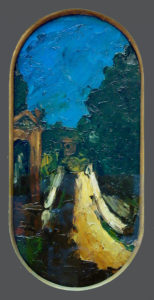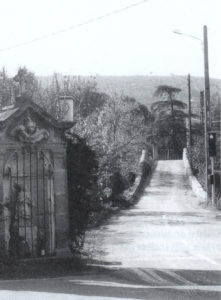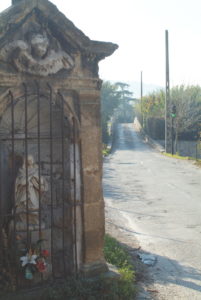R066 Paysage à l’oratoire et le pont des Trois Sautets 1865-1866 (FWN36)
Pavel Machotka
(Cliquer sur l’image pour l’agrandir)
The first landscape whose site we can document after the Aqueduc gallo-romain, ancien chemin d’Aix à Meyrargues (R044, FWN17) picture — Paysage à l’oratoire et le pont des Trois Sautets, a small palette knife painting of 1865-66 — testifies once again to a restless search; it is utterly original in paint handling, and unlike most of the other landscapes of this period it reveals a greater passion for paint itself than for observation. The subject is a bridge, seen head-on, its shape so nearly symmetrical that it could be a flat plane like the oratory that stands at its left. One assumes that that was Cézanne’s purpose: to lead us to view the painting not as a scene in three dimensions but as a grouping of abstract shapes – and to notice above all the dramatic work of the palette knife. (Forty years later, he will paint the bridge from the side, in watercolor, but that symmetrical view, too, will lie flat in the picture plane.
Adapted from Pavel Machotka, Cézanne: Landscape into art.





Vous devez être connecté pour poster un commentaire.